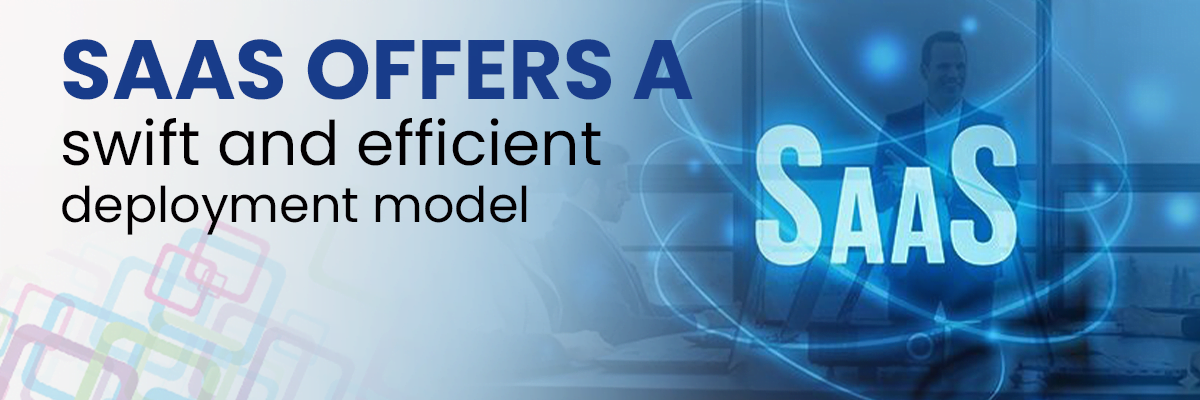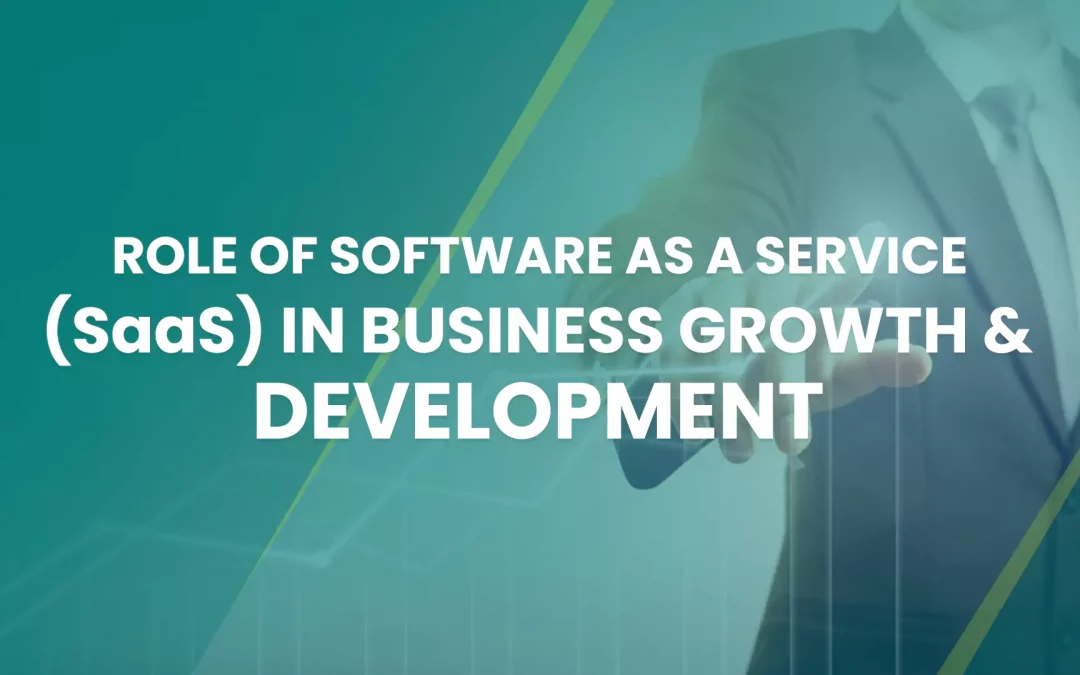The global business landscape is evolving rapidly. Entrepreneurs are continuously looking for new and innovative ways to stay competitive and achieve long-term sustainability. From changing corporate strategies to adopting modern technologies, all possible steps are being taken to bring agility to organizational operations and improve client satisfaction.
Over the years, Software as a Service (SaaS) has played a key role in business transformation. Growth-oriented companies are shifting to the SaaS business model to automate their operations and achieve corporate excellence. Similarly, new partnerships are being built with organizations specialized in SaaS development services. This new approach is helping both established firms and SMEs strengthen their competitive edge and accomplish their desired objectives.
The following article outlines what is Software as a Service (SaaS), its importance and benefits, and how businesses can adopt this trend to improve their long-term growth prospects.
What is Software as a Service (SaaS)?
Software as a service (SaaS) is defined as a modern software delivery model that allows users to access a wide range of cloud-based applications via the internet. SaaS is a subscription-based model, which means that users pay for the use of software on a monthly or yearly basis. SaaS is also known as “on-demand” software because users don’t need to install are maintain the application on their device. Some of the exclusive benefits of Software as a Service (SaaS) include:
- Allows users to access their applications anywhere if they have an internet connection.
- Decreases IT costs by shifting the responsibility for maintenance and support to the vendor.
- Offers a better user experience, as it updates automatically and allows users to receive new features quickly.
- Increases the speed at which companies can deploy new technology
- Helps professionals focus on their core competencies.
Importance of Software as a Service (SaaS)
Software as a Service (SaaS) is the new way of doing business. It has changed the way companies operate and manage their IT infrastructure. The reason is simple: it provides a way for companies to focus on their core business while still getting the technology they need.
SaaS products are accessible by multiple users through the internet, rather than being installed on individual computers. Today, businesses are adopting SaaS as a way to streamline internal processes and tackle the challenge of accessing applications from anywhere. What once was a niche software area is now a primary focus for most organizations.
Software as a Service (SaaS) adoption has increased over the last few years because of the many benefits it provides. These software solutions are hosted in data centers and can be accessed via the internet by users who have been granted login credentials.
Benefits of Software as a Service (SaaS)
Some benefits are bellows:
1. Accessibility
The first and most important reason to consider SaaS is the availability of Information Technology (IT) resources. Businesses can use SaaS without having to invest in costly IT infrastructure. You need not download and install these applications on your device; rather, you can access them via the internet anytime, anywhere. This means that employees can work from home or while traveling, without having to install and configure the software on their laptops, smartphones, or tablets.
2. Scalability
SaaS enables companies to scale up or down their IT resources, depending on their business needs at any given time. SaaS improves business continuity, enabling organizations to minimize business disruption due to potential technical outages.
3. Risk Reduction
SaaS also comes with several security features, such as encryption, identity management, and monitoring tools that can be helpful in terms of safeguarding data from threats like cyberattacks. This way, SaaS offers a reduction in overall data security risks, as it is hosted and managed by the application provider. Users’ data is stored in a highly secure and well-protected database. This way, SaaS applications prevent hackers from accessing your company’s important data and minimize cybersecurity risks to a great extent.
4. Cost-efficiency
Another major benefit of deploying SaaS software is a reduction in the overall migration costs. Since you don’t have to bear the installation and maintenance costs, SaaS decreases your overall operational costs without compromising the data security.
5. Business Growth
SaaS products help businesses grow by increasing their team productivity, reducing total cost of ownership (TCO), and minimizing the time to market. SaaS is the most suitable option for organizations that are looking for ways to increase efficiency, reduce costs, and increase productivity.
6. Ease of Use
Another important aspect of SaaS is that the user does not need to maintain the application. This ensures that the organization does not have to hire staff for upgrading, maintaining, or managing the software. Overall, SaaS is the most suitable option for organizations that are looking for ways to increase efficiency, reduce costs, and increase productivity.
7. Rapid Deployment
Unlike traditional software implementations that involve extensive planning, infrastructure setup, and testing, SaaS offers a swift and efficient deployment model.

This expedited process enables businesses to quickly adopt and start utilizing the software, minimizing downtime and accelerating time-to-value.
8. Automatic Updates
In the SaaS ecosystem, the responsibility for software updates is shifted from individual users or IT departments to the SaaS providers. This means that once a business subscribes to a SaaS solution, it automatically receives the latest updates, features, and security patches without requiring any manual intervention.
This not only ensures that businesses constantly have access to the most advanced and secure version of the software but also relieves them of the burden associated with managing updates.
9. Focus on Core Competencies
The offloading of software-related tasks to SaaS providers not only streamlines operations but also facilitates a more agile and competitive stance. This emphasis on core competencies is not just a matter of efficiency; it’s a strategic decision that positions businesses to be more responsive to market dynamics, customer needs, and emerging opportunities. Thereby, fostering sustainable growth and development.
10. Global Reach
SaaS solutions, accessible through the internet, provide a universal platform that facilitates seamless collaboration and data access across diverse locations. This democratization of access is particularly invaluable for companies seeking to expand their reach and establish a presence in new markets. Whether for collaboration among international teams or for delivering consistent services to clients worldwide, SaaS enables businesses to overcome traditional barriers and operate on a truly global scale.
How Businesses can Benefit from SaaS?
As discussed above, businesses can benefit significantly from SaaS. However, certain factors can help determine whether your organization should choose SaaS or on-premises software.
Firstly, businesses should understand the importance of choosing the right solution, as it can affect the growth and productivity of the company. This can be done by identifying the company’s pain points, or the areas where it is experiencing challenges. Once the pain points are identified, the organization can choose the right solution to address those pain points. For example, if your organization is facing challenges with managing the data, then choosing a data management SaaS solution would be ideal.
Key Takeaway
SaaS has emerged as one of the most relevant technologies in the software industry. It has gained a lot of traction in recent years, as businesses have come to realize the many benefits of this technology.
SaaS offers several advantages over on-premises software, including better scalability, lower overall cost, and minimal maintenance. Organizations can use SaaS to increase efficiency, reduce costs, and increase productivity. SaaS is the most suitable option for businesses that are looking to adopt a software-as-a-service model.

